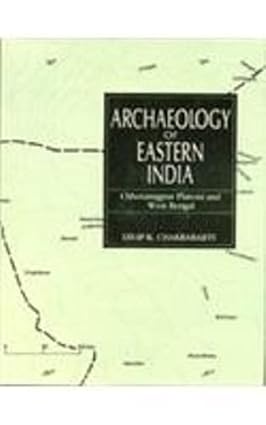You will not be allowed to compare more than 4 products at a time
View compare
1
/
of
1
Archaeology of Eastern India: Chhotanagpur Plateau & West Bengal Hardcover
Archaeology of Eastern India: Chhotanagpur Plateau & West Bengal Hardcover
Regular price
Rs. 1,250.00
Sale price
Rs. 1,250.00
Regular price
Rs. 895.00
Unit price
/
per
Tax included.
Shipping calculated at checkout.
Book Edition: 1 Edition
Publish Date: 1 December 1993
Publisher: Munshiram Manoharlal Publishers
Language: English
Book Pages: 242
Author: Chakrabart K Dilip
Low stock: 1 left
Vendor
Shiv Kripa BooksEstimated delivery: 5-7 Days from order date.

For a number of reasons the archaeology of the Chhotanagpur plateau and its extension up to the edge of the Bhagirathi plain in West Bengal deserves more than a passing mention in Indian archaeology. First, its sheer geographical extent requires emphasis: more than a hundred thousand square kilometres spread diagonally between the hills overlooking the Ganges near Rajmahal to the hills in southwestern Singhbhum on the one hand and between the northwesternmost part of Palamau to the Sonamukhi and Garh Jaipur forests in the eastern section of Bankura on the other. Secondly, the entire region is full of archaeological sites from the lower palaeolithic stage onwards, and some of the major issues of cultural development in eastern India are centred around them. Thirdly, the plateau which is rich in metals, stones and timber is the most important resource-bearing area in east India, and the way in which it was integrated into an exchange network with the plains may be a major archaeological and historic theme of study. Fourthly, the region as a whole is a home of a large number of tribal communities on various levels of subsistence and with different linguistic affiliations. Early this century a government officer wrote that it was as near as one could get to 'primitive India' but does this 'primitiveness' mean that this was an 'area of isolation' cut off from the main flow of Indian history? Which areas of study admit of the possibilities of ethnographic continuum between the prehistoric past and in the preindustrial present in this region? Based on field-surveys undertaken between 1981 and 1987, this work studies the archaeology of this region as a whole. Archaeological research in this region goes back to the 1860s but it is perhaps for the first time that the region as a whole has been studied and various dimensions of its archaeology focussed. This is also one of the major attempts to view archaeology as long-term settlement history in the context of India.

